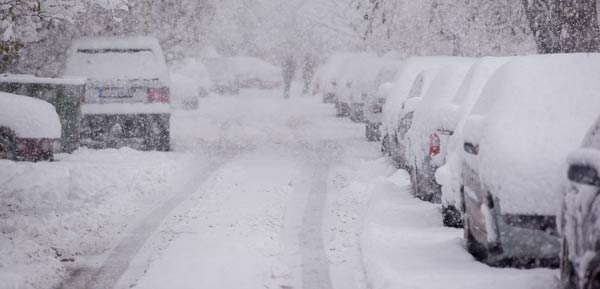
Winter Weather Plays Hide and Seek
It’s becoming the norm to keep three seasons of outerwear within easy reach, because who knows which jacket you’ll need on any given day? But somehow, we’re still surprised by just how cold winter can get.
“That’s why we urge members never to skip steps when preparing for winter,” says Tim Jaskiewicz, PDRMA Risk Management Consultant. “Keeping facilities safe and undamaged requires being diligent with ongoing maintenance — and not letting our guard down.”
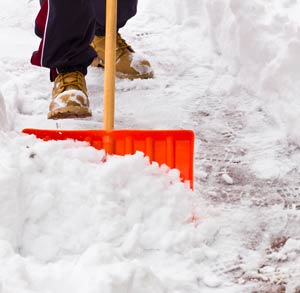 Back to Basics Back to Basics
It’s smart, Jaskiewicz notes, to follow winter best practices and not forget the basics:
- Observe Core 6 strategies to minimize slip, trip and fall injuries.
- Give yourself plenty of time to get from point A to point B, so you can walk slowly and carefully over potentially slick surfaces.
- Plan your route. Look ahead when you walk. When possible, avoid inclines.
- Complete a 30-second Site Safety Walk Through before you begin any outdoor work.
- Carrying items can impair your balance, so keep your hands free.
- Walk on designated walkways. Taking shortcuts over snow piles and areas where snow and ice removal isn’t possible is a risk to avoid.
- When available, use a handrail.
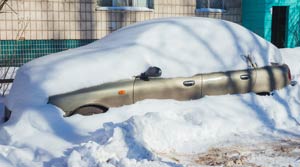 Be careful when entering and exiting vehicles — use 3 Points of Contact. Be careful when entering and exiting vehicles — use 3 Points of Contact.- Wear shoes, boots, cleats and/or other personal protective equipment your agency recommends for traction on snow and ice and to keep warm outdoors.
- Use floor mats to remove moisture from the soles of your shoes when entering a building. Take extra shoes with you to change from winter footwear to indoor footwear.
- Report potential slip and fall hazards immediately.
- Think about slip, trip and fall safety when outdoors inspecting facilities as well. No matter how carefully your coworkers remove snow and ice from parking lots, roadways and sidewalks, chances are you’ll still encounter slippery surfaces when walking.
Seasonal and Unoccupied Facilities
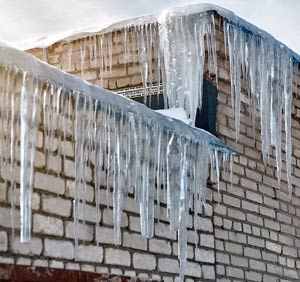 “Remembering the basics also applies to conducting inspections of your seasonal and unoccupied facilities,” adds Lindsey Robertson, PDRMA Risk Management Consultant. “Out of sight should never mean out of mind. No matter the temperature, you still need to conduct monthly facility inspections with an eye on cold-weather risks.” “Remembering the basics also applies to conducting inspections of your seasonal and unoccupied facilities,” adds Lindsey Robertson, PDRMA Risk Management Consultant. “Out of sight should never mean out of mind. No matter the temperature, you still need to conduct monthly facility inspections with an eye on cold-weather risks.”
In addition to following PDRMA’s Security and Protection of Vacant or Unoccupied Buildings Guide and Checklist (199), review how to Prevent Dry Sprinkler System Freezing During Winter (235) where appropriate. And take extra measures to protect your unoccupied facilitates from winter damage:
- Set thermostats to at least 55 degrees during colder months to keep pipes from freezing. Regularly check the thermostat to ensure it maintains the appropriate temperature range.
- Properly secure all doors, windows and other openings to prevent wind, rain, snow and other precipitation from getting inside and causing damage.
- Inspect gutters during winter months to check for ice dams, which can cause large amounts of water to enter and damage buildings. If you notice dams forming, contact a professional to remove them and add needed insulation as prevention. Click here to learn more about preventing and fixing ice dams.
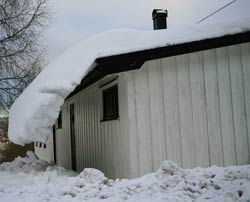 Check for any signs of interior leaks, which may indicate a roofing problem. A small roof repair is much less costly than extensive water damage from a leak. Check for any signs of interior leaks, which may indicate a roofing problem. A small roof repair is much less costly than extensive water damage from a leak.- Keep sidewalks in front of your buildings free of snow and ice — regardless of whether they are occupied.
- Clear paths to dumpsters and access areas.
- Ensure emergency exit doors and pathways are free of ice and snow.
- Make sure to clear around fire hydrants so they are accessible.
|